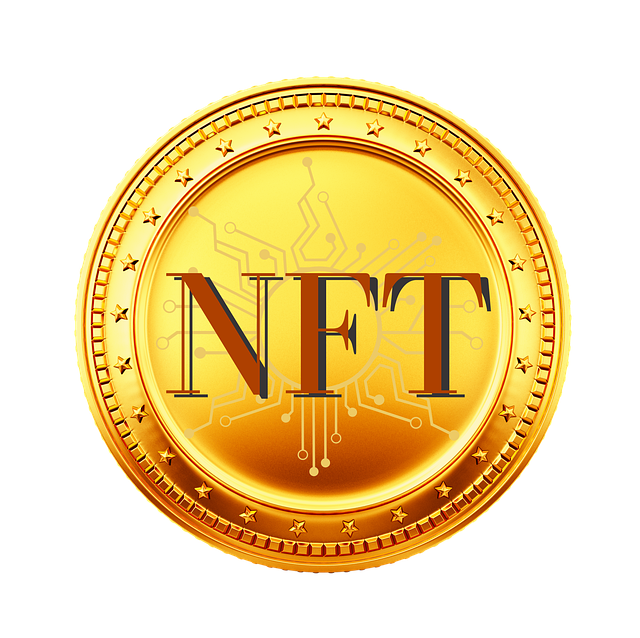Can You Buy Crypto on Bybit? Complete Guide to Buying, Fees, and Alternatives
Author: Jameson Richman Expert
Published On: 2025-11-05
Prepared by Jameson Richman and our team of experts with over a decade of experience in cryptocurrency and digital asset analysis. Learn more about us.
Can you buy crypto on Bybit? Yes — this guide explains exactly how to buy cryptocurrency on Bybit, which payment methods and trading options are available, what verification and fees to expect, and practical tips to make your first purchase safely. You’ll also find alternatives, on‑ramps, regulatory considerations, and useful resources to help you choose the best route for your situation.

Quick summary: Can you buy crypto on Bybit?
Bybit offers multiple ways to buy crypto: on‑chain spot trading, instant buy via third‑party fiat on‑ramps (credit/debit and bank transfers), peer‑to‑peer (P2P) fiat trading, and token swaps/convert tools in the account. Depending on your country, KYC verification and supported fiat currencies vary. Below we explain step‑by‑step how to buy on Bybit, costs, limits, and alternatives like Binance, MEXC, Bitget and more.
Table of contents
- How Bybit lets you buy crypto (methods)
- Step‑by‑step: How to buy crypto on Bybit
- Fees, limits, and payment processors
- KYC, identity verification and regional rules
- Examples: Buying BTC and USDT on Bybit
- Security best practices
- Alternatives & recommended platforms
- Regulation and how it affects you
- FAQ
- Conclusion
How Bybit lets you buy crypto (methods)
Bybit offers several on‑ramps to acquire cryptocurrency. Choose the method that suits your speed, fees and regulatory comfort level:
1. Instant buy (fiat on‑ramp via third‑party providers)
Bybit integrates payment partners (e.g., Simplex, Banxa and local providers) that let you purchase crypto with a credit/debit card or bank transfer directly in the Bybit app or website. These services charge conversion and processing fees; prices are quoted at checkout.
2. P2P (peer‑to‑peer) fiat marketplace
Bybit’s P2P market connects buyers and sellers who exchange fiat using local payment methods (bank transfer, e‑wallets, etc.). P2P often has competitive rates and lower fees, but requires careful attention to counterparty instructions and reputation (rating system).
3. Spot trading (fund account with crypto)
If you already hold crypto in another wallet or exchange, you can deposit it to Bybit and use the spot market to trade for other tokens. Deposits and withdrawals are on‑chain and network fees apply.
4. Convert/swap and recurring buy tools
Bybit offers simple convert tools (swap one token for another instantly) and some regions have recurring buy/autobuy features to dollar‑cost average (DCA) into cryptocurrencies.
5. Third‑party OTC and liquidity partners
For large purchases or institutional flows, Bybit also has OTC desks and liquidity solutions — typically used by high‑volume traders and institutions.

Step‑by‑step: How to buy crypto on Bybit
Below are detailed steps for the most common buyer flows: Instant Buy (card/bank), P2P, and depositing crypto to trade on spot markets.
A. Buying with a credit/debit card (Instant Buy)
- Create a Bybit account: go to Bybit and sign up. Use the invite link if you want to register: Bybit invite link.
- Complete account verification (KYC) if required for fiat purchases — usually ID and selfie. Verification unlocks higher fiat limits and payment methods.
- Navigate to "Buy Crypto" → select your fiat currency, payment method (card), and the crypto you want (e.g., BTC, ETH, USDT).
- Enter the amount, review the price/fee and the payment provider’s terms, then confirm the purchase. You’ll be redirected to the payment processor to complete the card charge.
- After successful payment, purchased crypto appears in your Bybit spot or funding wallet.
B. Buying on P2P
- Go to Bybit’s P2P marketplace. Filter offers by fiat currency, payment method and seller rating.
- Choose an offer and click “Buy”. Follow seller instructions (e.g., bank transfer, local e‑wallet). Don’t release funds until the seller’s crypto is escrowed by Bybit (platform safeguards).
- After payment confirmation, mark as paid and release the crypto from escrow. If the seller delays, use the dispute process.
C. Deposit crypto from another wallet and trade spot
- In the Bybit dashboard, go to “Assets” → “Deposit”. Select the coin and correct blockchain network (double‑check network choice).
- Send funds from your external wallet or exchange to the deposit address. Wait for network confirmations.
- Once deposited, go to Bybit Spot Market and place a Market or Limit order to buy other tokens.
Note: Always double‑check deposit addresses and network selections. Sending tokens over the wrong chain can result in permanent loss.
Fees, limits, and payment processors
Fees and limits on Bybit depend on the payment method, your KYC tier, and regional factors:
- Card/bank purchases: Payment processors typically charge a fee (2–5% or a fixed service charge) and apply a spread. Bybit displays the total at checkout.
- P2P: Many P2P trades have low or zero platform fees, but sellers may include a margin in the quoted price.
- Spot trading fees: Bybit uses a maker/taker fee structure for spot trades; fees can be reduced via VIP tiers or fee discounts.
- Deposit/withdrawal: Crypto deposits are free (network fee paid by sender). Withdrawals incur network fees determined by the blockchain and the token.
- Limits: Fiat purchase limits are set by payment partners and KYC level. Higher KYC tiers unlock higher single‑transaction and daily limits.
Before buying, always compare the final cost (fee + spread) with other providers. For price forecasts and market context, see this Bitcoin price prediction analysis: Bitcoin price prediction for December 2025.
KYC, identity verification and regional rules
Bybit’s fiat on‑ramp features require identity verification in most jurisdictions. Typical documentation includes:
- Government‑issued ID (passport, national ID, or driver’s license)
- Selfie or live facial verification
- Proof of address for certain withdrawal limits
Regulatory acceptance of crypto exchanges varies by country. Some countries restrict or prohibit exchanges; in others, exchanges must obtain licenses. Always check local rules. For example, whether Binance or other exchanges operate legally in specific countries can be nuanced — see this discussion about Binance’s legality in Pakistan for context: Is Binance legal in Pakistan?.

Buying examples: BTC and USDT on Bybit
Example A — Buying BTC with a credit card
- You want to buy $500 of BTC via card. On the Bybit “Buy Crypto” page, choose USD and BTC.
- The page shows a quoted BTC amount after the card/integration fees and spread. Confirm and proceed to payment.
- After confirmation, BTC is credited to your Bybit spot wallet. If you plan to trade, move it to the spot account; to hold long‑term, consider transferring to a private wallet.
Example B — Buying USDT via P2P bank transfer
- Filter P2P offers for USDT in your local fiat. Pick a seller with high completion rate and reasonable price.
- Place buy order, transfer funds to the seller’s bank account, and upload proof if required.
- Once seller confirms receipt and releases funds from escrow, the USDT will appear in your account.
Security best practices when buying crypto on Bybit
Follow these recommendations to reduce risk:
- Enable two‑factor authentication (2FA) — prefer authenticator app (Google Authenticator) over SMS
- Use a strong, unique password and a password manager
- Verify website URLs and bookmarks to avoid phishing (always check SSL and domain)
- For large amounts, transfer funds to a self‑custody hardware wallet (Ledger/Trezor)
- Carefully follow P2P instructions and check seller ratings before trading
- Keep software up to date and be cautious about sharing personal info beyond necessary KYC
Alternatives & recommended platforms
If Bybit’s payment options or availability don’t meet your needs, consider other reputable exchanges and apps. Below are popular alternatives along with direct sign‑up links:
- Binance — broad fiat support and global liquidity. Sign up: Register on Binance.
- MEXC — supports many tokens and fiat routes. Sign up: Register on MEXC.
- Bitget — strong derivatives and spot features. Sign up: Register on Bitget.
- Bybit — fast UX and multiple payment options. Sign up: Register on Bybit.
For beginners choosing the best buying app, this guide offers curated picks and selection criteria: Best crypto buying app 2025: top picks.

Regulation: How legal and compliance factors affect purchases
Regulatory environments have a major impact on whether you can buy crypto on a particular exchange:
- Some jurisdictions ban or heavily restrict crypto services; exchanges may limit fiat on‑ramps in those regions.
- Exchanges must often comply with anti‑money laundering (AML) and know‑your‑customer (KYC) rules — this affects account verification and ongoing monitoring.
- Payment providers may block transactions related to crypto in some countries, even if the exchange is available.
To understand the broader regulatory landscape and how it influences exchange availability, consult reputable sources such as the U.S. Securities and Exchange Commission (SEC) site: SEC, or the UK Financial Conduct Authority: FCA. For background on cryptocurrencies, see the Wikipedia overview: Cryptocurrency — Wikipedia.
If you’re located in countries with uncertain exchange rules, reading community‑driven guides and regional news is helpful — for example this market context article that covers near‑term price and scenarios: Market guide and Bitcoin short‑term scenarios.
FAQ — Quick answers
Do I need KYC to buy crypto on Bybit?
For many fiat on‑ramps, yes. Basic crypto deposits/withdrawals may be permitted without KYC, but buying with a card or bank transfer usually requires KYC verification.
Can I buy crypto with a debit/credit card on Bybit?
Yes — Bybit supports card purchases through integrated third‑party processors in supported jurisdictions.
Is Bybit safe for beginners?
Bybit is a major exchange with security features and insurance funds, but beginners should follow security best practices and consider moving large holdings to hardware wallets for self‑custody.
Why did my card payment fail?
Common causes: card blocked by issuer for crypto purchases, insufficient funds, incorrect billing info, or the payment processor does not support your country. Contact your card issuer or try another payment method.
Does Bybit support recurring buys?
Availability varies by region. Some users can set up recurring purchases or use third‑party recurring services to DCA into crypto.
How long does a card purchase take?
Usually instant or within minutes after payment confirmation. Bank transfers can take longer (hours to days) depending on the provider and region.
Troubleshooting and common pitfalls
- Always ensure you select the correct blockchain network when depositing — sending a token across the wrong chain can be irreversible.
- Check platform status pages and support if a transaction is delayed — sometimes providers have maintenance windows.
- When using P2P, confirm seller instructions and retain proof of payment until escrow releases the crypto.
- Be wary of phishing links — only use official URLs and bookmarks. For Bybit support and help center topics, visit the official help pages (search “Bybit help” or visit Bybit’s official site directly).

Practical tips to minimize costs
- Compare the total cost (processor fee + spread) across instant on‑ramps and P2P before buying.
- Consider buying stablecoins (USDT/USDC) via lower‑fee routes and then trading on the spot market for altcoins to avoid higher card fees for each purchase.
- Use limit orders when possible to reduce taker fees and catch better prices.
- If you plan regular purchases, set up recurring buys or manually DCA to average cost over time.
When to move crypto off an exchange
Exchanges are convenient for trading but not intended as long‑term cold storage. Move substantial holdings to a hardware wallet if you plan to hold long‑term. For smaller, frequently traded amounts, keeping funds on exchange for instant access is acceptable, but always enable security features.
Community and further reading
To deepen your knowledge, read market analyses and community insights. For example, a market guide that explains short‑term Bitcoin price scenarios can be useful to time buys or form an opinion: Bitcoin market guide and live price scenarios. For longer‑term perspective, read Bitcoin price predictions and analyses: Bitcoin price prediction 2025 (December).

Legal & compliance note
Cryptocurrency laws differ by jurisdiction and change frequently. This article is informational and not financial or legal advice. Always check local regulations, consult a licensed advisor if needed, and verify exchange terms and conditions before transacting. For an example of how legal status can vary by country, consider regional coverage like the Binance legality discussion: Is Binance legal in Pakistan?.
Conclusion
So, can you buy crypto on Bybit? Yes — Bybit supports multiple purchase methods including card/bank instant buys via payment partners, P2P fiat trading, and standard spot purchases after depositing crypto. Which method you choose depends on your location, verification status, desired speed, and cost sensitivity. Always check fees, use 2FA, and consider moving larger balances to cold storage. If Bybit doesn’t suit your needs, alternatives like Binance, MEXC or Bitget offer additional on‑ramps and features — sign up links are provided above for convenience.
Recommended next steps
- Create and verify your Bybit account if you’re ready to buy: Bybit invite link.
- If you want to explore other exchanges, compare options: Binance, MEXC, Bitget.
- Read market guides and forecasts to inform timing and strategy: Best crypto buying app 2025.
Disclaimer: This article is for educational purposes only and does not constitute investment advice. Cryptocurrency investments carry risk; do your own research and consider consulting a licensed financial advisor.